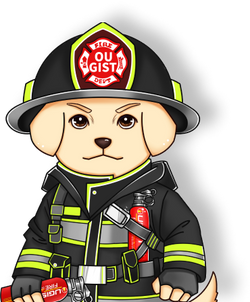Fire, an elemental force that has shaped human history, can be both a tool and a destructive foe. From the dawn of civilization, humans have sought ways to harness fire's power, yet it remains a double-edged sword. The invention of the handheld fire extinguisher stands as a testament to our ability to control and protect against this fierce adversary.

Understanding the Handheld Fire Extinguisher
A handheld fire extinguisher is a compact firefighting device designed to control and extinguish small fires before they escalate into life-threatening infernos. These portable devices are a crucial element of fire safety measures in homes, businesses, vehicles, and various other settings. They operate by releasing fire-suppressing agents, which can be in the form of water, foam, dry chemicals, or even specialized gases.

The Components and Working Principle
Handheld fire extinguishers typically consist of the following components:
- Cylinder: The container that holds the extinguishing agent under pressure.
- Nozzle or Hose: The outlet through which the extinguishing agent is expelled onto the fire.
- Pressure Gauge: Indicates the pressure level inside the extinguisher, ensuring it is ready for use.
- Safety Pin and Tamper Seal: Prevents accidental discharge and indicates if the extinguisher has been tampered with.
- Handle and Lever: Used to activate the extinguisher by squeezing the lever, which releases the extinguishing agent.
The working principle is relatively simple. When the lever is squeezed, it activates a mechanism that opens a valve between the extinguisher and the nozzle. The pressure inside the cylinder propels the extinguishing agent out, effectively smothering the fire by removing heat or interrupting the chemical reaction necessary for combustion.
Types of Fire Extinguishers
Different types of handheld fire extinguishers are designed to combat various classes of fires, each involving different types of materials. The classes of fires and their corresponding extinguishing agents are:
- Class A (Combustible Solids): Uses water, foam, or dry chemicals.
- Class B (Flammable Liquids): Uses foam, dry chemicals, or carbon dioxide.
- Class C (Electrical Fires): Uses dry chemicals or carbon dioxide (non-conductive agents).
- Class D (Metal Fires): Uses specialized dry powders.
- Class K (Kitchen Fires): Uses wet chemicals specifically designed for high-temperature cooking fires.
Choosing the correct type of fire extinguisher for a given environment is crucial to effective fire response and minimizing potential damage.
Using a Handheld Fire Extinguisher: PASS Technique
To effectively use a handheld fire extinguisher, the PASS technique is recommended:
- Pull: Pull the safety pin or tamper seal to unlock the extinguisher.
- Aim: Aim the nozzle or hose at the base of the fire where the fuel source is.
- Squeeze: Squeeze the handle or lever to discharge the extinguishing agent.
- Sweep: Sweep the nozzle or hose from side to side to cover the entire fire area.
Maintenance and Training
Owning a fire extinguisher isn't enough; regular maintenance and training are essential. Maintenance includes checking the pressure gauge, ensuring the safety pin is intact, and looking for any physical damage. Training involves understanding how to use the extinguisher correctly and recognizing when to evacuate and call the fire department.


